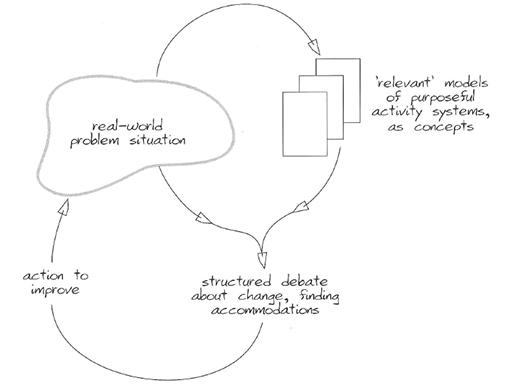6.2 Distinctions between Mode 1 and Mode 2
Table 2 sets out some distinctions which an observer might make between Mode 1 and Mode 2 use of SSM by a practitioner.
| Mode 1 | Mode 2 |
| Method-driven | Situation-driven |
| Intervention | Interaction |
| Sometimes used only as a linear sequence | Always iterative |
| SSM as an external recipe | SSM as an internalised model |
Footnotes
Checkland and Scholes (1990) characterise Mode 2 as occurring when the systems practitioner interacts in the events (practices) and ideas (theories) which unfold over time. Another way of saying this is that the practitioner is a participant in the situation rather than being external to it (and it is for this reason that the history of the practitioner – called a tradition – was drawn to your attention). I have set these two modes of using SSM out as if they are two categories but Peter Checkland (personal communication) says that:
‘It ought to be made clear that Mode 1/Mode 2 are not two categories; they define a spectrum; they are ideal types; any actual study will be somewhere on the spectrum. The ‘Mode 2’ concept arose naturally as, with experience, two things came together:
- the ‘technology’ of SSM became internalised; it became tacit knowledge which we did not have to stop and think about; and
- the experience of the use of SSM convinced us that there was a need to pay attention to the process being enacted as much as the content which the process was addressing.
Mode 2 was thus an emergent development arising experientially not a designed development.’
Both the evolution of a method/methodology and its use in practice is a learning process flowing from experience in action outlined in Figure 3. SSM, like other approaches, is a learning process that can be mapped on to a learning cycle as Peter Checkland himself has done in Figure 9.

